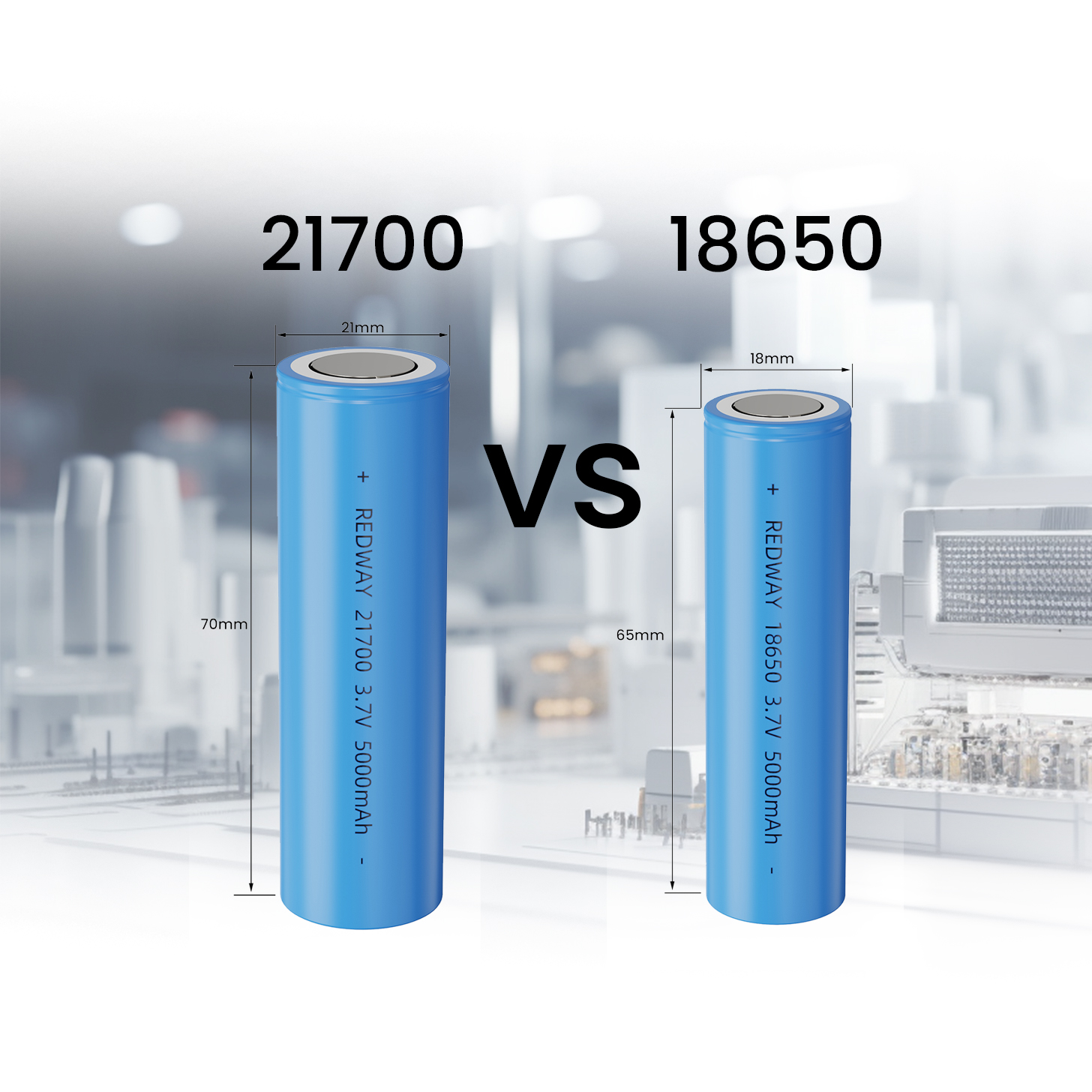
In the world of portable electronics and electric vehicles, the battle for supremacy in battery technology rages on. Among the contenders, two prominent players stand out: the 21700 and the 18650 batteries. These lithium-ion powerhouses have been at the forefront of innovation, driving advancements in energy storage and delivery. But which one truly reigns supreme? Let's delve into the intricacies of the 21700 vs 18650 battery debate to find out.
21700 vs 18650 BatteryUnderstanding the Basics:
Before we dive into the comparison, let's establish some groundwork. Both the 21700 and the 18650 batteries belong to the lithium-ion family, renowned for their high energy density and rechargeable nature. The numbers in their names represent their dimensions – the 21700 being 21mm in diameter and 70mm in length, while the 18650 measures 18mm by 65mm. Despite their size disparity, these batteries share fundamental characteristics such as voltage, chemistry, and electrode composition.
Advantages of the 21700 Battery:
The 21700 battery, a relatively newer entrant to the scene, boasts several advantages over its predecessor. One of the most notable benefits is its higher energy density. With a larger form factor, the 21700 can accommodate more active material, resulting in increased capacity and longer runtime. This makes it an ideal choice for applications requiring sustained power delivery, such as electric vehicles and high-performance electronics.
Moreover, the 21700 battery exhibits improved thermal performance and enhanced safety features. Its larger size allows for better heat dissipation, reducing the risk of overheating and thermal runaway – a critical consideration in demanding environments. Additionally, manufacturers have incorporated advanced safety mechanisms, including reinforced cell structures and proprietary chemistries, to mitigate potential hazards.
Advantages of the 18650 Battery:
Despite facing stiff competition from its successor, the 18650 battery continues to hold its ground with several inherent advantages. One of its primary strengths lies in its widespread adoption and established manufacturing infrastructure. Having been in production for decades, the 18650 enjoys economies of scale and a robust supply chain, resulting in lower production costs and greater accessibility.
Furthermore, the 18650 battery offers compatibility with a myriad of devices and applications. From laptops and flashlights to power tools and vaping devices, its standardized form factor has made it a staple in various industries. This versatility, coupled with its proven reliability and performance, ensures continued relevance in an ever-evolving landscape.
Performance Comparison:
When it comes to performance metrics, both the 21700 and the 18650 batteries have their respective strengths. In terms of energy density and capacity, the 21700 holds a slight edge due to its larger size and advanced electrode technology. This translates to higher energy storage capabilities and extended runtime, making it the preferred choice for power-hungry devices.
However, the 18650 battery isn't far behind, especially when it comes to power output and cycle life. Its compact dimensions and mature chemistry enable efficient charge and discharge rates, making it well-suited for applications requiring quick bursts of energy. Additionally, the 18650's proven track record for longevity and reliability makes it a dependable option for mission-critical systems.
Future Outlook:
As technology continues to evolve, so too will the landscape of battery innovation. While the 21700 battery currently holds an advantage in terms of energy density and performance, ongoing research and development efforts aim to push the boundaries even further. Advancements in materials science, manufacturing techniques, and electrode design promise to unlock new possibilities and usher in the next generation of lithium-ion batteries.
However, the 18650 battery isn't ready to bow out just yet. Its established presence and widespread acceptance ensure its relevance for years to come, particularly in niche markets and legacy applications. As manufacturers explore ways to optimize efficiency and reduce costs, the 18650 battery will continue to play a vital role in powering our devices and driving technological progress.
Conclusion:
In the ultimate battery battle between the 21700 and the 18650, the answer isn't as straightforward as one might think. While the 21700 boasts superior energy density and thermal performance, the 18650 remains a formidable contender with its proven reliability and widespread adoption. Ultimately, the choice between these two batteries depends on the specific requirements of each application – whether it's maximizing energy storage, minimizing costs, or ensuring compatibility.
As technology evolves and consumer demands evolve, it's likely that both the 21700 and the 18650 batteries will continue to coexist, each carving out its own niche in the vast landscape of energy storage solutions. Whether you're powering your smartphone or propelling the next generation of electric vehicles, rest assured that both of these lithium-ion giants have their place in shaping the future of portable power.
In conclusion, while the 21700 vs 18650 battery debate rages on, it's clear that both have their strengths and weaknesses. The keyword "21700 vs 18650 Battery" remains pivotal in understanding and navigating the complex world of battery technology.